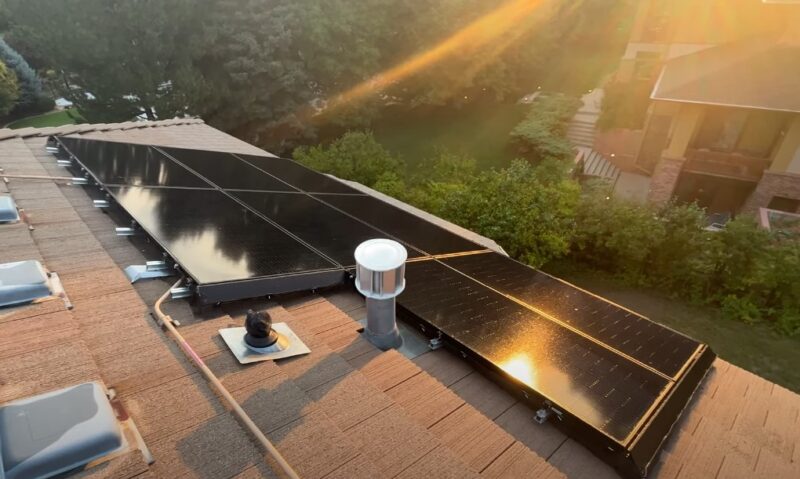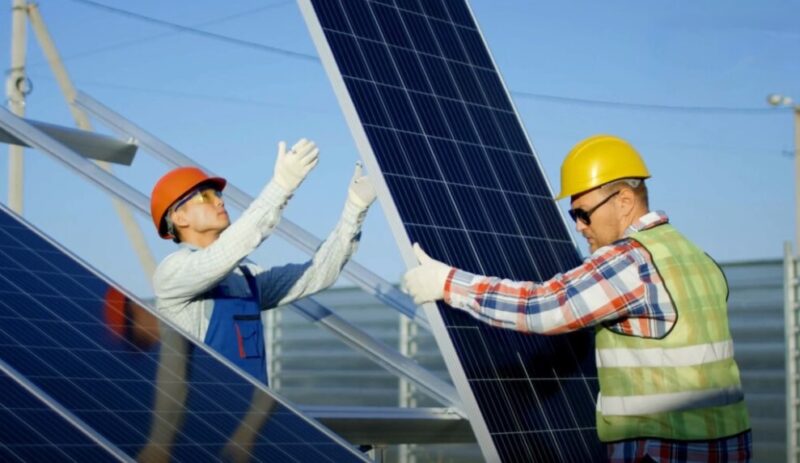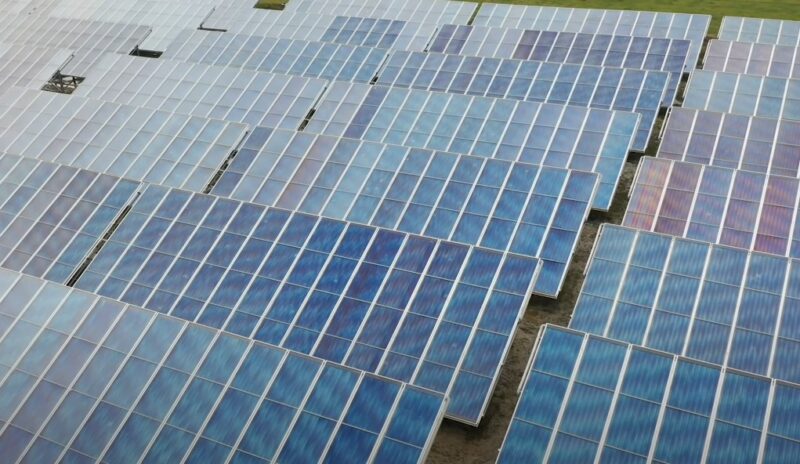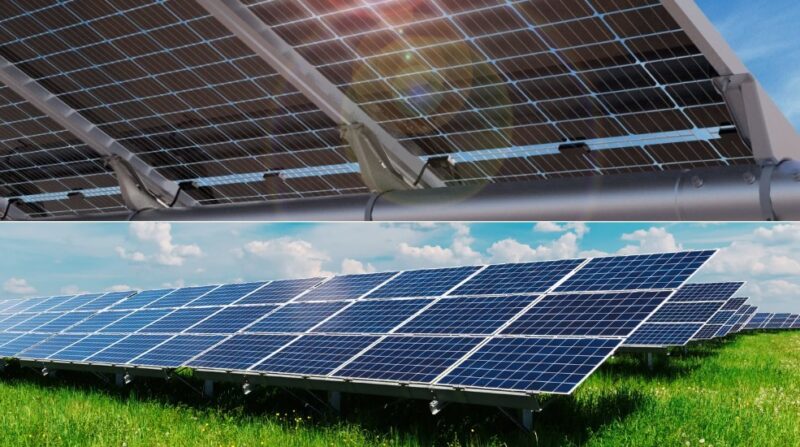Solar energy is becoming an increasingly important part of the global energy landscape due to its sustainability and potential for reducing greenhouse gas emissions.
As more individuals and businesses turn to solar power, choosing the right solar panels becomes essential.
Among the most popular types are monofacial and bifacial solar panels. Both types have their advantages and are suitable for different applications, but understanding their differences is crucial to making the right decision.
The choice between these panels depends largely on individual needs, budget, and the specific environment in which the panels will be installed.
Monofacial Solar Panels

Monofacial solar panels represent the traditional and most widely used type of solar technology. These are designed to capture sunlight on one side only, with solar cells placed on a single surface.
This type is commonly used in residential and commercial setups due to its simplicity and cost-effectiveness.
Structurally, monofacial panels are lighter and more straightforward compared to bifacial panels.
They consist of a series of solar cells embedded within a protective layer, typically glass or plastic, that faces the sun.
The backside is usually covered with a material that doesn’t allow light to pass through. Because of this design, monofacial ones are generally less expensive and easier to install.
Common applications of monofacial panels include rooftop installations in residential homes and ground-mounted arrays in commercial properties.
They are particularly well-suited for non-reflective surfaces and areas where direct sunlight exposure is maximized.
Monofacial solar panels offer several advantages:
- Cost-effectiveness: Their simpler design makes them more affordable than bifacial ones.
- Lightweight and easier to install: Their lightweight nature simplifies installation, especially on rooftops.
- Proven track record: Monofacial has been used for decades and is known for its reliability and durability in most conditions.
Bifacial Solar Panels

Bifacial solar panels are an advanced type of solar technology designed to capture sunlight on both the front and rear sides.
This dual-sided structure allows bifacials to generate more energy compared to the traditional monofacial variant, as they can absorb light reflected from surrounding surfaces, such as snow, sand, or specially designed reflective materials.
Structurally, bifacials are typically made with tempered glass on both sides, enhancing their durability and allowing light to pass through the back.
This makes them slightly heavier and more robust than monofacial ones, but their ability to capture light from both sides can significantly increase their energy output—up to 30% more in optimal conditions.
Bifacial panels are often found in larger commercial solar farms or industrial installations where maximizing energy output is crucial. They are particularly useful in environments with reflective surfaces, such as snowy regions or areas with bright, reflective ground materials.
Key advantages of bifacial solar panels include:
- Higher efficiency: By capturing light from both sides, bifacial ones can generate more energy, making them more efficient in the long run.
- Durability: These are designed to withstand harsh environmental conditions, such as extreme temperatures or high wind speeds.
- Flexible installation: Bifacial can be installed in various orientations and mounting setups, offering flexibility in placement.
What are the Key Differences Between These?
There are several important differences between monofacial and bifacial solar panels, and understanding these can help determine which type is the best fit for specific applications.
Energy Output
Monofacials capture sunlight from only one side, producing a consistent and reliable amount of energy, making them ideal for most residential and commercial applications.
Bifacial panels, on the other hand, capture light from both sides, allowing for up to 30% more energy generation when installed in reflective environments.
Cost
Monofacials are more budget-friendly due to their simpler design and lower manufacturing costs. Bifacials come with a higher upfront cost, but this can be offset by the increased energy output and long-term savings from higher efficiency.
Installation Requirements
Monofacial panels can be installed on almost any surface, including rooftops, lawns, and other flat areas without concern for rear-side exposure. Bifacials require reflective surfaces or elevated mounting to maximize their rear-side light absorption, which can make installation more complex and costly.
Durability
Monofacial panels are generally lighter and less durable in extreme environmental conditions. Bifacial panels are heavier but designed to withstand harsher conditions, making them more suitable for challenging climates.
In terms of applications, monofacial panels are best for standard residential and commercial use, while bifacial panels shine in environments where rear-side light exposure can be maximized.
Factors to Consider When Choosing

When deciding between monofacial and bifacial solar panels, several factors should be taken into account to ensure the right fit for specific energy needs and environmental conditions.
Budget: Monofacial panels are more affordable upfront, making them ideal for those on a tight budget. Bifacial panels, while more expensive initially, can provide long-term savings due to higher energy production.
Space and Location: Monofacial panels can be installed on virtually any surface without worrying about rear-side light exposure. In contrast, bifacial panels perform best in open spaces with reflective surfaces like rooftops or ground installations where light can bounce onto the rear side.
Energy Needs: Residential users with standard energy consumption typically find monofacials sufficient. However, businesses or industries with higher energy demands may benefit from the increased efficiency offered by bifacials.
Aesthetic Preferences: Monofacial panels come in various designs that blend seamlessly with the environment. Bifacial ones, while slightly bulkier, offer a more modern, glass-like appearance, which can be appealing for some installations.
Environmental Conditions: Bifacials excel in snowy or highly reflective environments, making them an excellent choice for regions with frequent snowfall or bright surfaces. In contrast, monofacials are more versatile across different climates.
The Bottom Line
Both monofacial and bifacial solar panels offer unique benefits suited to different needs.
Monofacial panels are cost-effective and easy to install, making them ideal for residential and small commercial projects. Meanwhile, bifacial panels provide higher efficiency and durability, particularly in environments with reflective surfaces.
Carefully considering factors such as budget, installation space, and energy needs will help users make the best choice for their solar energy solutions.

